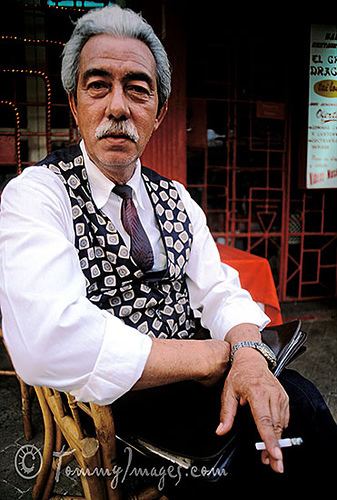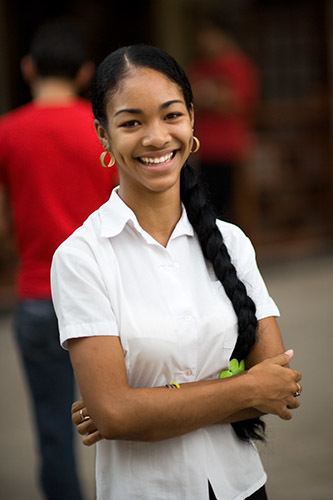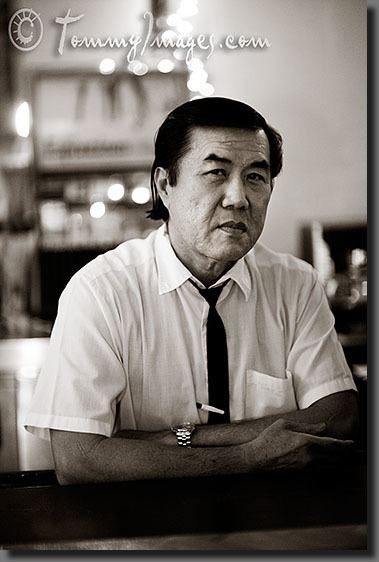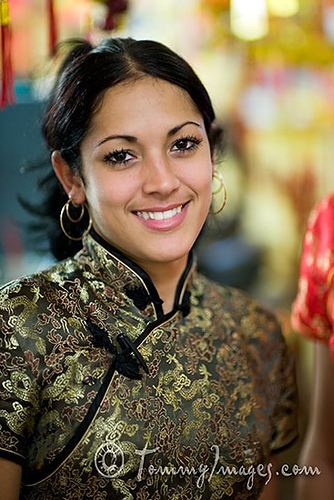 | ||
Chinese Cubans (Spanish: sino-cubano) are Cubans of Chinese ancestry who were born in or have immigrated to Cuba. They are part of the ethnic Chinese diaspora (or Overseas Chinese).
Contents

History

Chinese immigration to Cuba started in 1857 when Chinese (Cantonese and Hakka) contract workers were brought to work in the sugar fields, bringing the religion of Buddhism with them. Hundreds of thousands of Chinese workers were brought in from China, Hong Kong, Macau, and Taiwan during the following decades to replace and / or work alongside African slaves. After completing eight-year contracts or otherwise obtaining their freedom, some Chinese immigrants settled permanently in Cuba, although most longed for repatriation to their homeland. Havana's Chinatown (known as Barrio Chino de La Habana) is one of the oldest and largest Chinatowns in Latin America. Some 5,000 immigrants from the U.S. came to Cuba during the late 19th century to escape the discrimination present at the time. A small wave of Chinese immigrants also arrived during the early 20th century to escape the political chaos in China.

There were almost no women among the nearly entirely male Chinese coolie population that migrated to Cuba(1%). In Cuba some Indian (Native American), mulatto, black, and white women engaged in carnal relations or marriages with Chinese men, with marriages of mulatto, black, and white woman being reported by the Cuba Commission Report.

120,000 Cantonese 'coolies' (all males) entered Cuba under contract for 8 years. Most of these men did not marry, but Hung Hui (1975:80) cites there was a frequency of sexual activity between black women and these Asian immigrants. According to Osberg (1965:69) the free Chinese practice of buying slave women and then freeing them expressly for marriage was utilized at length. In the nineteenth and twentieth centuries, Chinese men (Cantonese) engaged in sexual activity with black Cuban women, and from such relations many children were born.

In the 1920s, an additional 30,000 Cantonese and small groups of Japanese also arrived; both immigrations were exclusively male, and there was rapid intermarriage with white, black, and mulato populations. CIA World Factbook. Cuba. 2008. May 15, 2008. claimed 114,240 Chinese-Cuban coolies with only 300 pure Chinese.

In the study of genetic origin, admixture, and asymmetry in maternal and paternal human lineages in Cuba, thirty-five Y-chromosome SNPs were typed in the 132 male individuals of the Cuban sample. The study does not include any people with some Chinese ancestry. All the samples were white Cubans and black Cubans. Two out of 132 male sample belong to East Asian Haplogroup O2 which is found in significant frequencies among Cantonese people is found in 1.5% of Cuban population. About 120,000 Chinese coolies (all males) entered Cuba under contract for eight years, most were not married, but Hung Hui (1975:80) cited frequent sexual activity between black women and Chinese coolies. According to Osberg (1965:69), the free Chinese practiced buying slave women and freeing them expressly for marriage. In the 19th and 20th centuries, Chinese men engaged in sexual activity with white Cuban women and black Cuban women, and from such relations many children were born. In the 1920s, an additional 30,000 Chinese arrived; the immigrants were exclusively male. In 1980, 4000 Chinese lived there, but by 2002, only 300 pure Chinese were left.
Two thousand Chinese, consisting of Cantonese and Hakkas, fought with the rebels in Cuba's Ten Years' War. A monument in Havana honours the Cuban Chinese who fell in the war, on which is inscribed: "There was not one Cuban Chinese deserter, not one Cuban Chinese traitor."

Chinese Cubans, including some Chinese-Americans from California, joined the Spanish–American War in 1898 to achieve independence from Spain, but a few Chinese, who were loyal to Spain, left Cuba and went to Spain. Racial acceptance and assimilation would come much later.

When the new revolutionary government led by Fidel Castro came to power in 1959, the economic and political situation changed. Many Chinese grocery store owners, having had their properties expropriated by the new government, left Cuba. Most of these settled in the United States, particularly nearby Florida, where they and their US-born children are called Chinese-Americans or Cuban-Americans of Chinese descent, while a relatively few fled to the nearby Dominican Republic and other Latin American countries, and also to the US territory of Puerto Rico, where they are called Chinese Puerto Ricans, Cuban-Puerto Ricans of Chinese descent, or Cuban-Americans of Chinese descent. Chinese refugees to United States include people whose ancestors came to Cuba 10 years before the Cuban Revolution and those from the United States. These Chinese American refugees, whose ancestors had come from California, were happy to be back in the United States. As a result of this exodus, the number of pure Chinese dropped sharply in Havana’s Barrio Chino. The places to which they migrated had a unique Chinese culture and a popularity of Chinese Cuban restaurants.
Current distribution
The Chinese Cubans fought in the Cuban war of independence on the side of those seeking independence from Spain. A memorial consisting of a broken column memorializes Chinese participation in the war of independence at the corners of L and Linea in Havana. While many fled, some Chinese stayed after the start of Fidel Castro's rule in 1961. Younger generations are working in a wider variety of jobs than the previous generation. Many are entering show-business as song composers, actors, actresses, singers, and models.
The Barrio Chino de La Habana is no longer among the largest Chinatowns in Latin America. Most Chinese Cubans live outside Barrio Chino.
Several community groups, especially Chinatown Promotional Group (Spanish: Grupo Promotor del Barrio Chino), worked to revive Barrio Chino and the faded Chinese culture. Chinese Language and Arts School (Escuela de la Lengua y Artes China) opened in 1993 and has grown since then, helping Chinese Cubans to strengthen their knowledge of the Chinese language. Today, Chinese Cubans tend to speak Mandarin, Cantonese, Hakka, and a mixture of Chinese and Spanish, in addition to Spanish and English. They also promoted small businesses, like beauty parlors, mechanical shops, restaurants, and small groceries, provided to them to create a view of Barrio Chino. Havana’s Barrio Chino also experienced buildings of Chinese architecture and museum with backgrounds about China. As a result, the Chinese Cuban community has gained visibility.
